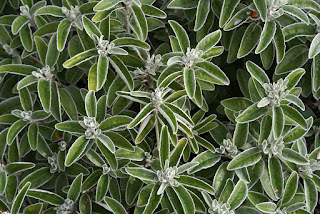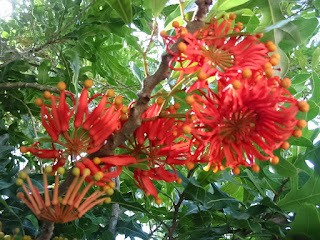I love the arrival of March.
It usually means the temperatures are on the way down and the weather
seems more settled, although it also often heralds the arrival of autumn
rains. March starts the long slow
festival of changing colour that the deciduous trees undergo as they prepare for
winter, and the Head Gardener and I both have birthdays in March, although
whether that is something to be happy about is a matter of debate.
What March also brings, very excitedly to me at least, is
the start of the spring bulb selling season, with daffodils and tulips galore,
but also a sprinkling of a bewildering range of other species.
It all starts with the close cousins, the anemones and ranunculus,
superficially similar but quite different in many ways. They are the first off the block because they
are almost all raised in the Northern Hemisphere, and thus are available sooner
than home-grown bulbs that require more processing.
Ranunculus are among the prettiest of all the spring
flowering bulbs with a range of bright colours, delightful flower shape, and a
wonderful succession of blooms from each tuber.
A bed or a pot of single coloured flowers is a dramatic sight, while the
straight-stemmed flowers are perfect for picking and displaying in the house. There are even some strains that have been
specifically bred for the pot plant market, and flower at much lower height,
although I have to say they seem to be missing some of the grace that makes ranunculus
such fabulous garden plants.
When you buy ranunculus tubers they will be dormant, and
very hard and dry. To overcome this and
ensure they kick into growth they could be popped into a paper bag and left in
the refrigerator for a few weeks. This will give them a slow wake up from their
long slumber, and when they are removed from the cool they can be gently soaked
overnight. They can then be planted into
a well drained potting mix or directly into the garden if a sunny spot with
good drainage can be found.
The tubers consist are made up of claws connected to a
central crown at the top – it is important that the claws should be planted downwards
as the tuber will just rot if planted the wrong way around.
I find they do better if I start them in a potting tray, but
even then they are a little bit prone to rotting off, so it probably pays to
drench the potting mix with a fungicide.
They do like to grow in well fertilised soil, so it pays to work some
bulb fertiliser into the bed before planting.
Good general purpose fertiliser will suffice if you do not have bulb
fertiliser, and well composted animal manure is also good if worked in well
before planting. Watering can be a bit tricky as ranunculus do not
like to grow in damp spoils, but they also do not like drying out, the leaves
taking on a yellow cast if they do.
If you keep them well-fed and watered, ranunculus should be
in flower for months, providing a long lasting display for the garden and the
house alike.
In the distant past ranunculus had a brief period
of popularity among the obsessive flower growers on the United Kingdom – along with
tulips, anemones and gold-lace polyanthus, they were treasured for the
perfection of the flowers. In the case
of the ranunculus, that perfection required multiple petals arranged in a
globular fashion, each tipped with a contrasting colour. These exotic beauties have long since died
out, but garden ranunculus remain pretty, multi-petalled plants



